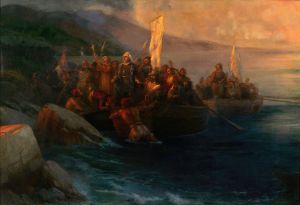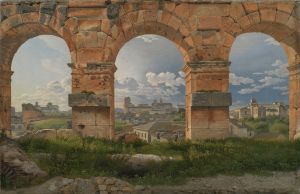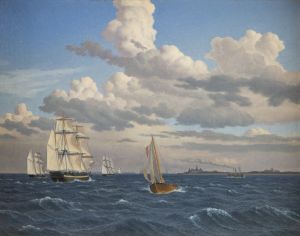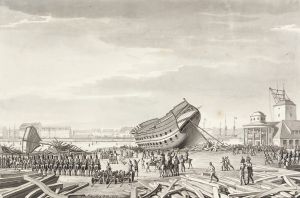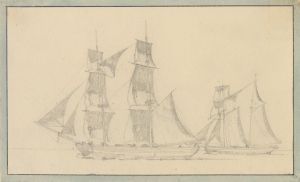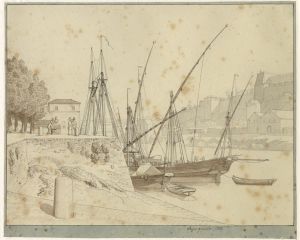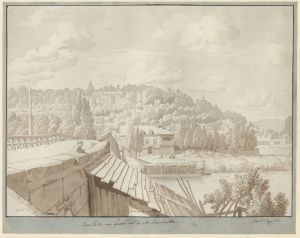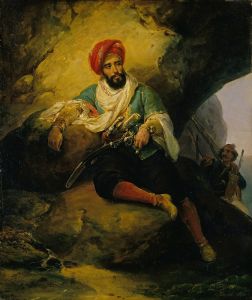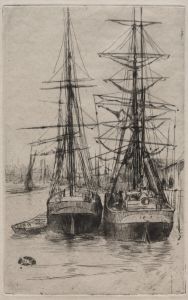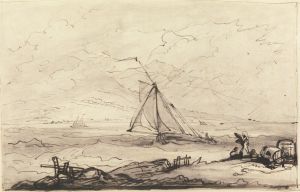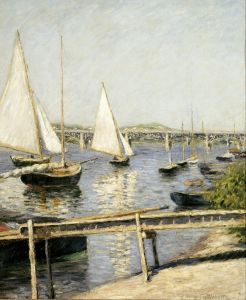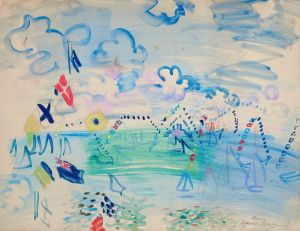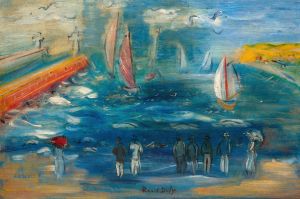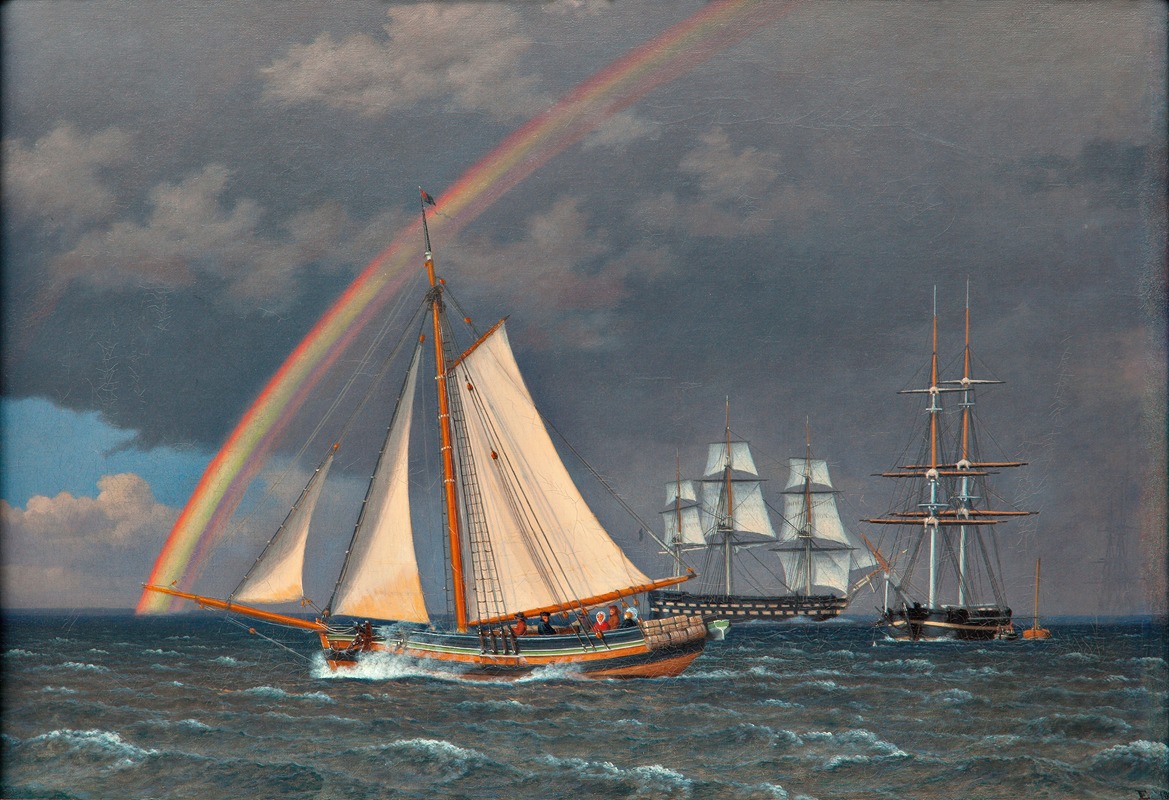
Rainbow at Sea and a Crossing Hunt with other Ships
A hand-painted replica of Christoffer Wilhelm Eckersberg’s masterpiece Rainbow at Sea and a Crossing Hunt with other Ships, meticulously crafted by professional artists to capture the true essence of the original. Each piece is created with museum-quality canvas and rare mineral pigments, carefully painted by experienced artists with delicate brushstrokes and rich, layered colors to perfectly recreate the texture of the original artwork. Unlike machine-printed reproductions, this hand-painted version brings the painting to life, infused with the artist’s emotions and skill in every stroke. Whether for personal collection or home decoration, it instantly elevates the artistic atmosphere of any space.
Christoffer Wilhelm Eckersberg, often referred to as the "father of Danish painting," was a prominent figure in the Danish Golden Age of art. His works are celebrated for their meticulous attention to detail, harmonious compositions, and ability to capture light and atmosphere. Among his many maritime paintings, Rainbow at Sea and a Crossing Hunt with other Ships stands out as an example of his skill in depicting seascapes.
This painting, created in 1829, showcases Eckersberg's fascination with the sea and his ability to render natural phenomena with scientific precision. The artwork depicts a dramatic maritime scene, featuring a rainbow arching over a turbulent sea. Several ships are visible, navigating the waves, with one vessel seemingly engaged in a crossing maneuver. The composition emphasizes the interplay between the forces of nature and human endeavor, a recurring theme in Eckersberg's maritime works.
Eckersberg's training and experiences significantly influenced his approach to painting. He studied at the Royal Danish Academy of Fine Arts in Copenhagen and later traveled to Paris and Rome, where he was exposed to the works of classical and contemporary masters. His time in Rome, in particular, deepened his understanding of perspective and light, elements that are evident in Rainbow at Sea and a Crossing Hunt with other Ships. Additionally, Eckersberg's interest in natural sciences and his practice of sketching directly from life contributed to the accuracy and realism of his seascapes.
The painting reflects Eckersberg's dedication to capturing the nuances of weather and atmospheric conditions. The rainbow, a fleeting and delicate natural phenomenon, is rendered with remarkable clarity, demonstrating his observational skills and technical mastery. The ships, depicted with precise rigging and sails, highlight his knowledge of maritime subjects, which he often studied firsthand.
Eckersberg's maritime paintings, including this work, were highly regarded during his lifetime and continue to be appreciated for their artistic and historical significance. They provide insight into the seafaring culture of 19th-century Denmark and the broader Romantic fascination with nature's power and beauty. Today, Rainbow at Sea and a Crossing Hunt with other Ships is considered an important example of Eckersberg's contribution to Danish art and his role in shaping the visual identity of the Danish Golden Age.
The painting is housed in the collection of the Statens Museum for Kunst (National Gallery of Denmark) in Copenhagen, where it remains accessible to the public as a testament to Eckersberg's enduring legacy.





